PSM for SSH pinpoints users who are entitled to use privileged accounts and initiate a privileged session, when, and for what purpose.
PSM for SSH separates end users from target machines and initiates privileged sessions without divulging passwords, maintaining the highest level of security that is typical to all CyberArk components.
In addition, PSM for SSH can display a broad overview of all activity performed on every privileged account, without exception. All activities are fully monitored and meet strict auditing standards.
PSM for SSH enables end users to connect transparently to target UNIX systems that use the SSH or Telnet protocol, including SSH tunneling.
This post shows some basic steps how to configure PSM-SSH connector to make it support HTML5 and AutoLogonSequence using a logon account
AutoLogonSequenceWithLogonAccount
As different devices may have different logon processes, you can configure how PSM for SSH will log on to a device using the AutoLogonSequence parameter. This parameter defines a multi-line sequence that is used by PSM for SSH during the automatic logon process and contains regular expression prompts and responses that define the process. The regular expressions can include dynamic values that PSM for SSH reads from the account properties, user parameters, or client-specific parameters, in this order. You can override this configuration at platform level.
| 1. | Account properties |
| 2. | User parameters |
| 3. | Client specific parameters |
Create new PSM-SSH Connection Components
1 Privilege Cloud - Administration - Configuration Options - Connection Components
Copy PSM-SSH connectior and paste for a new one.
2 AllowSelectHTML5
Type value: CyberArk.TransparentConnection.BooleanUserParameter, CyberArk.PasswordVault.TransparentConnection
3 AutoLogonSequenceWithLogonAccount
.*\@.*~\$ >exec /usr/bin/su - {Username}
Password:>{Password}
.*\@.*~\$ >exec sudo -i
.*>{Password}
Some linux platform will be able to use default regex value. It depends. But you can put multiple line of commands in.
4 Save and wait 10 minutes for PSM service to pick up the changes.
You can also manually restart the PSM service to get this change to take into effect immediately. The PSM is installed on a Windows system as an automatic system service called CyberArk Privileged Session Manager. It can be stopped and started through the standard Windows service management tools.
Modify PSM Connectors' Priority
Platform
Log onto the Password Vault Web Access as a user with permission to configure platforms.
Click ADMINISTRATION to display the System Configuration page, then click Platform Management to display a list of supported target account platforms.
Select the platform in which you will enable PSM for SSH, then click Edit; the settings page for the selected platform appears.
Expand UI & Workflows, and then expand Connection Components, and make sure that the PSM-SSH Connection Component is defined and enabled. Further, to enable users to copy files with PSM for SSH make sure that the PSM-SCPand PSM-SFTP Connection Components are defined and enabled.
Expand UI & Workflows, and then select Privileged Session Management; the PSM parameters are displayed with their default values.
To enable PSM to use accounts that are required to initiate PSM connections without requiring confirmation, even if the Safes are configured for Dual Control, change the value of DisableDualControlForPSMConnections to Yes.
Click Apply to save the new parameter values and stay in the same page,
or,
Click OK to save them and return to the System Configuration page.
Regex Value
==
Resolution
To change the default automatic logon sequence with logon account for all SSH connections that will be done with the PSMP-SSH connection component:
Click ADMINISTRATION, then in the System Configuration page click Options; the Web Access Options are displayed.
Expand Target Settings and then expand Client Specific; a list of Client Specific parameters appears.
Select AutoLogonSequenceWithLogonAccount, then in the Properties list, click the value of the Value property; the Value edit box appears.
Specify the prompts and responses to include in the automatic logon process, using regular expressions and dynamic account properties to mimic the exact sequence that will be run on the remote machine.
As prompts differ according to machine, it is important to make sure that you write the prompt exactly as the machine requires.
Specify the command that will elevate the logon user to the user who will run sessions on the remote machine. Use regular expression prompts and responses with dynamic values, as shown in the following example:
In each line, the text to the left of the ‘>’ (parenthesis) represents the regular expression for the prompt on the remote machine. The text to the right of the ‘>’ (parenthesis) represents the PSM for SSH response, including a dynamic reference to an account property.
This response can include one or more dynamic references. PSM for SSH reads these references in the following order: account properties, user parameters, then client specific parameters.
To specify ‘>’ as a character in the prompt, use the character code \x3e.
\[.*\@.* ~]\$ >exec su - {Username}
Password:>{Password}.*\@.*~\$ >exec /usr/bin/su - {Username}
Password:>{Password}
.*\@.*~\$ >exec sudo -i
.*>{Password}
Troubleshooting
If the Regex value is not working properly, your screen will be frozen for responding, until timed out to display you an "PSM - 059E Failed to execute login sequence"

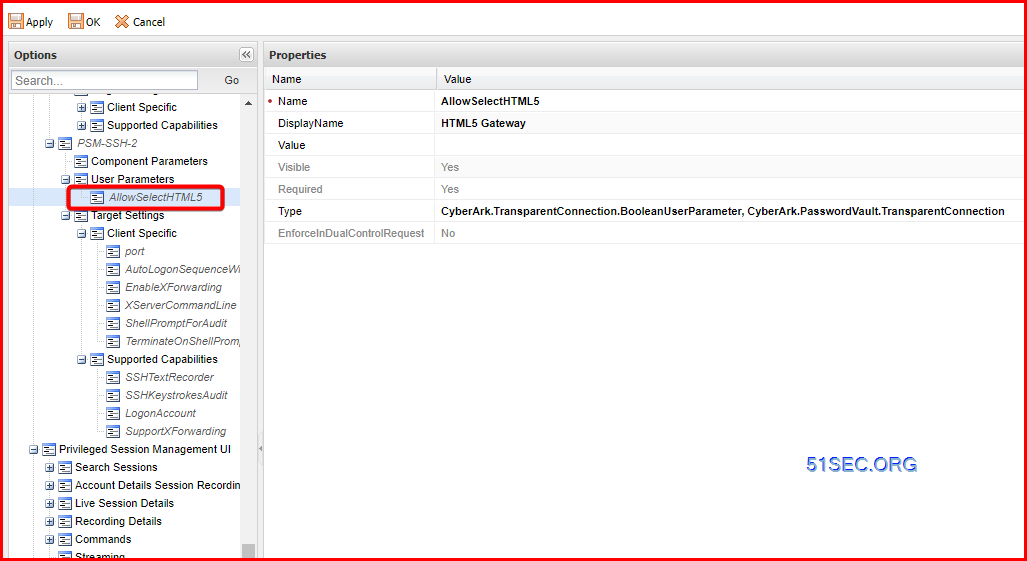

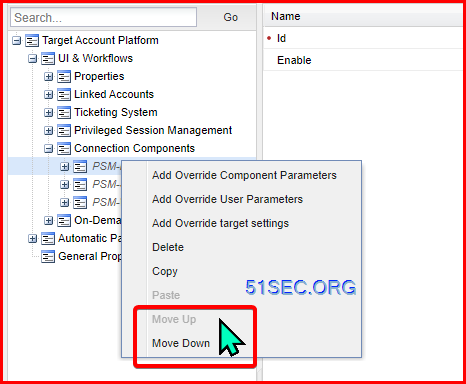

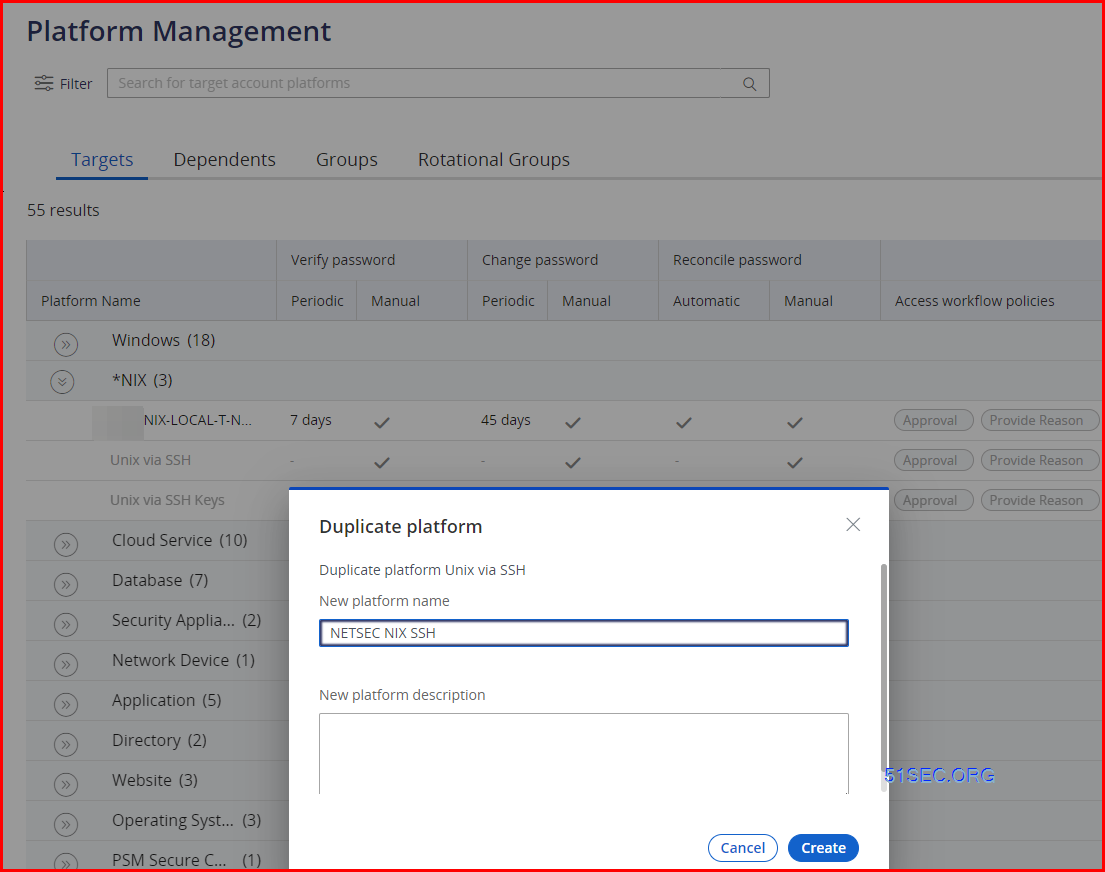
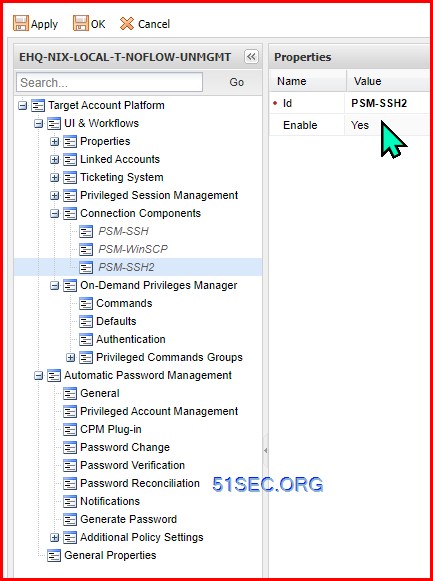
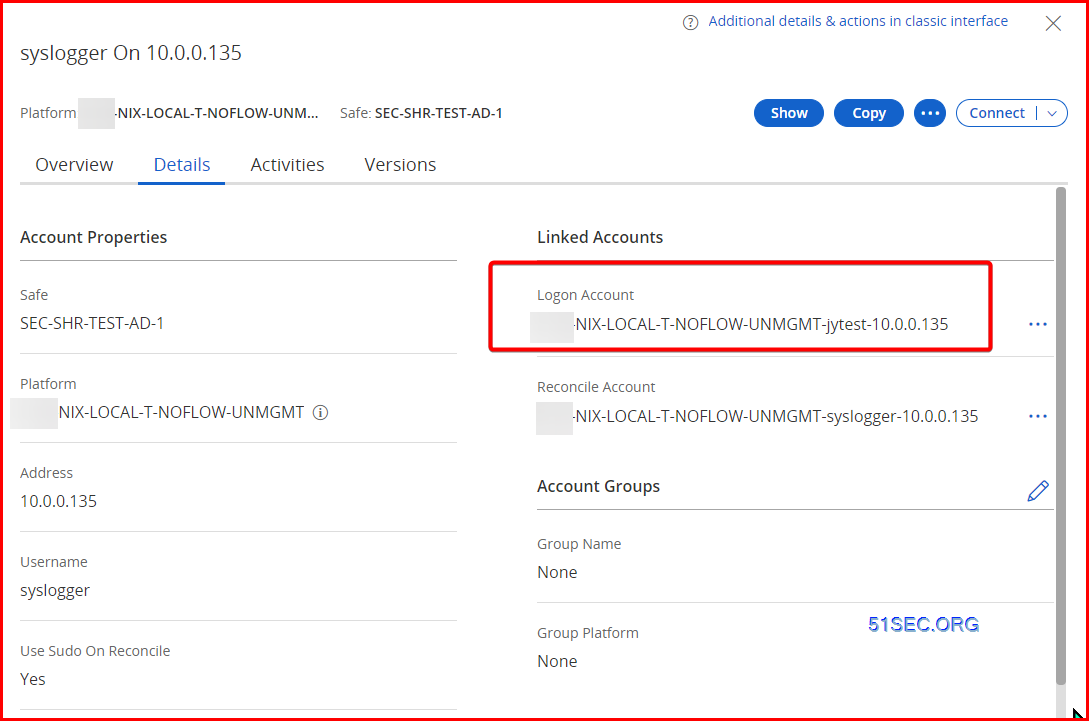










No comments:
Post a Comment